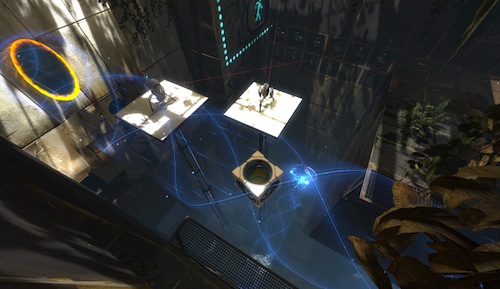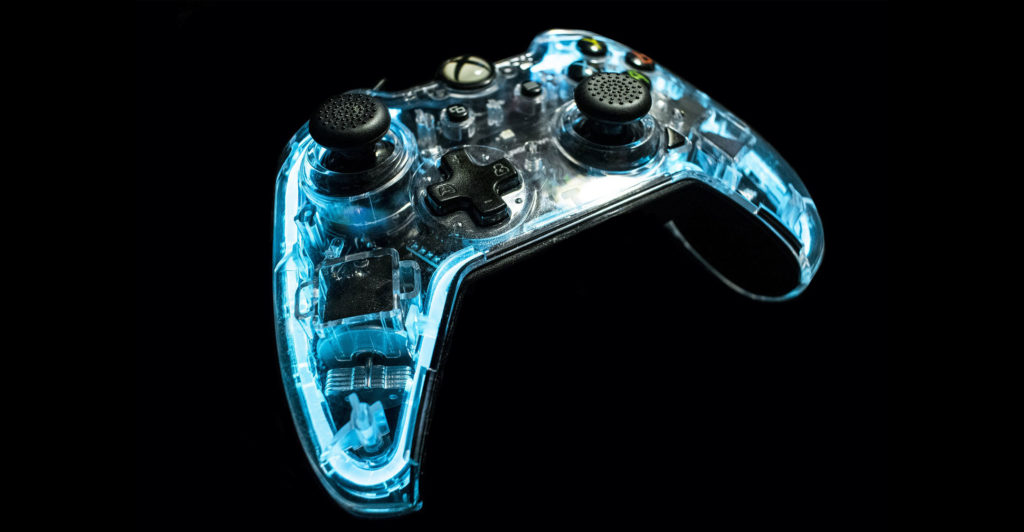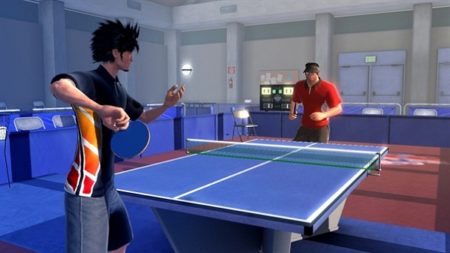
Portal 2 isn’t just a sequel to a cult first-person puzzle game. It could also be a major step towards a world where the platform you use to play a game matters less than the game itself.
The new title from Valve Software brings the firm’s Steam service to the PlayStation 3 for the first time, albeit in a limited form. Using a Steam Overlay for the console, PS3 owners will be able to play cooperative multiplayer matches with PC and Mac gamers on the Steam service, as well as chat to them using voice and text.
They’ll be able to link their copy of Portal 2 to their existing Steam accounts from their PS3s or set up a brand new account. They’ll be able to see their Steam friends list, view game stats and earn Steam achievements in lockstep with PlayStation trophies from their PS3s.
The PlayStation 3 version of the game will include a code to download and install Portal 2 to any Mac or PC linked to the user’s Steam account. That’s perhaps the most exciting aspect of the implementation of Steam for the PS3. Valve clearly sees Portal 2 as the same game, whichever platform you choose to play it on.

That’s pretty revolutionary thinking for the gaming industry. You assume you can listen to your music in your car, on your lounge stereo and on your PC without buying multiple copies of the same MP3 or disc. You don’t yet think about games in the same way.
Admittedly, the implementation isn’t perfect. Although PS3 gamers will be able to save their Portal 2 games to the Steam Cloud and access these saves from any PS3, they won’t be able to use them on PCs or Macs. That’s a pity — the idea of getting home to your console and picking up your Portal 2 game where you left it on your notebook during lunch is appealing.
There are a number of other technical and interface challenges that will need to be resolved before this sort of cross-platform gaming becomes commonplace. Because its multiplayer is cooperative and does not depend on twitch reflexes, Portal 2 is better suited to cross-platform play than most other multiplayer games. With this game, it simply doesn’t matter that the PC guy has more screen real estate and a more precise, responsive control scheme to work with than the PS3 player.
The Valve and Sony relationship is fascinating because of the way it redraws the competitive landscape, making it explicit that Valve and Microsoft now see each other as outright rivals. Steam, which raked in US$1bn in revenues during 2010, is to the delivery of gaming content what iTunes is to movies and music. The service started out life on Windows PC and is now also available for the Mac platform.
It has sewn up a market that Microsoft has tried unsuccessfully to court with the clunky, intrusive Games for Windows Live service. Naturally, Microsoft isn’t allowing Steam anywhere near the Xbox 360’s Xbox Live service, which has turned into a massively successful community and content platform under Redmond’s direct control.

Ironically enough, it was Microsoft that made the first timid steps towards cross-platform gaming earlier in this console generation. Its Games for Windows Live and Xbox Live services offer a universal friends list, achievements system and cross-platform chat for PC and Xbox 360 owners.
Microsoft even released at least one game — Shadowrun — that allowed PC and console gamers to play multiplayer matches against each other. But Microsoft seems to have shunned the idea of cross-platform gaming behind as unworkably complex and perhaps not necessarily good for its business.
Valve Software has no reason to care which devices you use to buy and play games on its service. By bringing the PS3 into the fold, it can effectively add another 45m devices to its network and sign up a number of new users. It would be happy to add the 50m or so Xbox 360 users to its network, if only Microsoft would allow it.
The reasons that Sony is allowing a company that will surely be a competitor in the future (if it isn’t one already) onto its network are murkier than Valve’s motives. Just like Microsoft, the Japanese electronics giant has invested heavily in creating the PlayStation Network as a platform for digital content distribution and online gaming.
Perhaps Sony realises that a close partnership with Valve can help it close some of the gaps between the PlayStation Network and Xbox Live. Many parts of the Steam service are more elegant and functional than the equivalents on the PlayStation network, which is not as refined or user-friendly as Xbox Live. PS3 users still lament the lack of cross-game voice chat on their system, for example.
http://www.youtube.com/watch?v=DLlbIajuVVU
Will we see more and more developers on the Steam service start to use the PS3 Steam Overlay to deliver their content, community and online gaming services to their PS3 customers? It could make sense for Sony to shift some of the burden of developing network services elsewhere so that it can focus on developing games and hardware. For now, Valve and Sony are saying nothing about their future plans and much probably hinges on how the Portal 2 experiment plays out.
Sony probably also sees the relationship with Valve as a way to jab Microsoft in the eye. The stronger Steam becomes, the better it will be able to compete with Xbox Live, which is really the Microsoft gaming platform that matters.
http://www.youtube.com/watch?v=RPIIgrtO3OA
Whatever Sony’s motivations are, its deal with Valve is a remarkably consumer-friendly move at a time when most device manufacturers are trying to lock their customers into proprietary app stores and online services. And the game will probably be pretty good, too, whichever platform you play it on. — Lance Harris, TechCentral
- Read about an experiment in PS3/PC/iOS/Android cross-platform gaming
- Portal 2 will be available for Windows PC, PlayStation 3 and Xbox 360 on 22 April from SA retailers
- Subscribe to our free daily newsletter
- Follow us on Twitter or on Facebook




